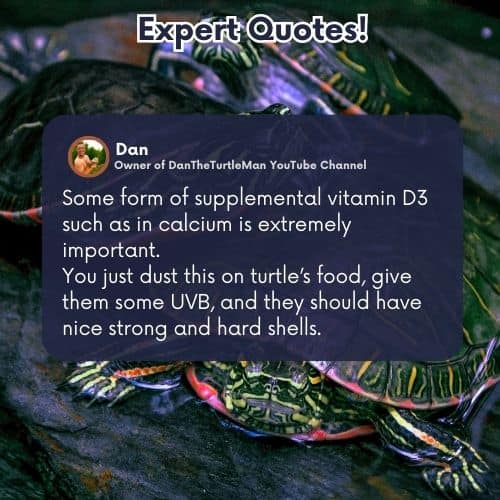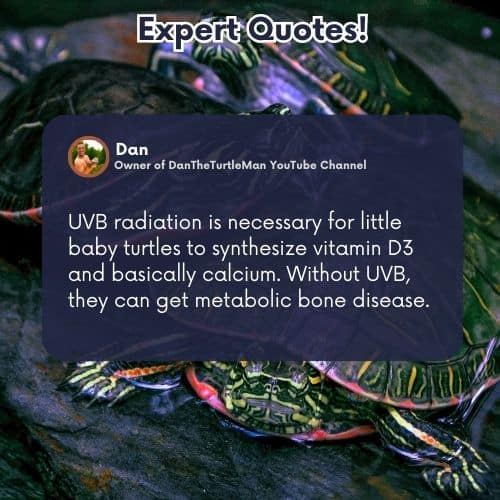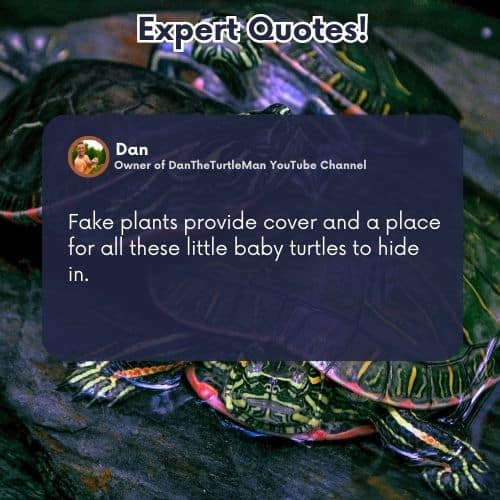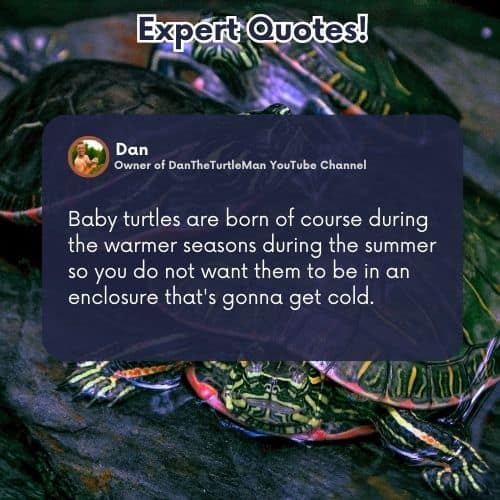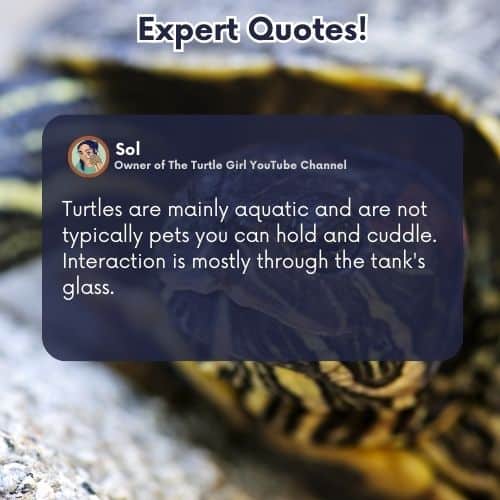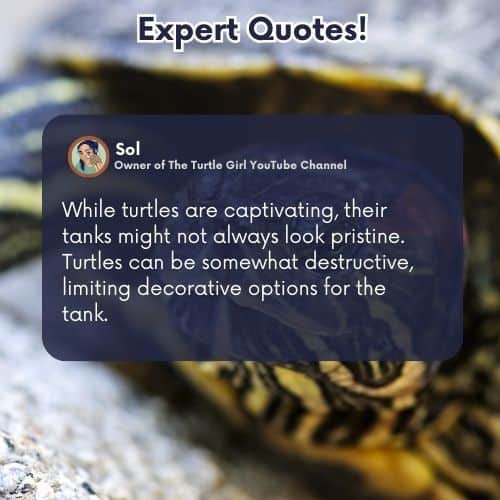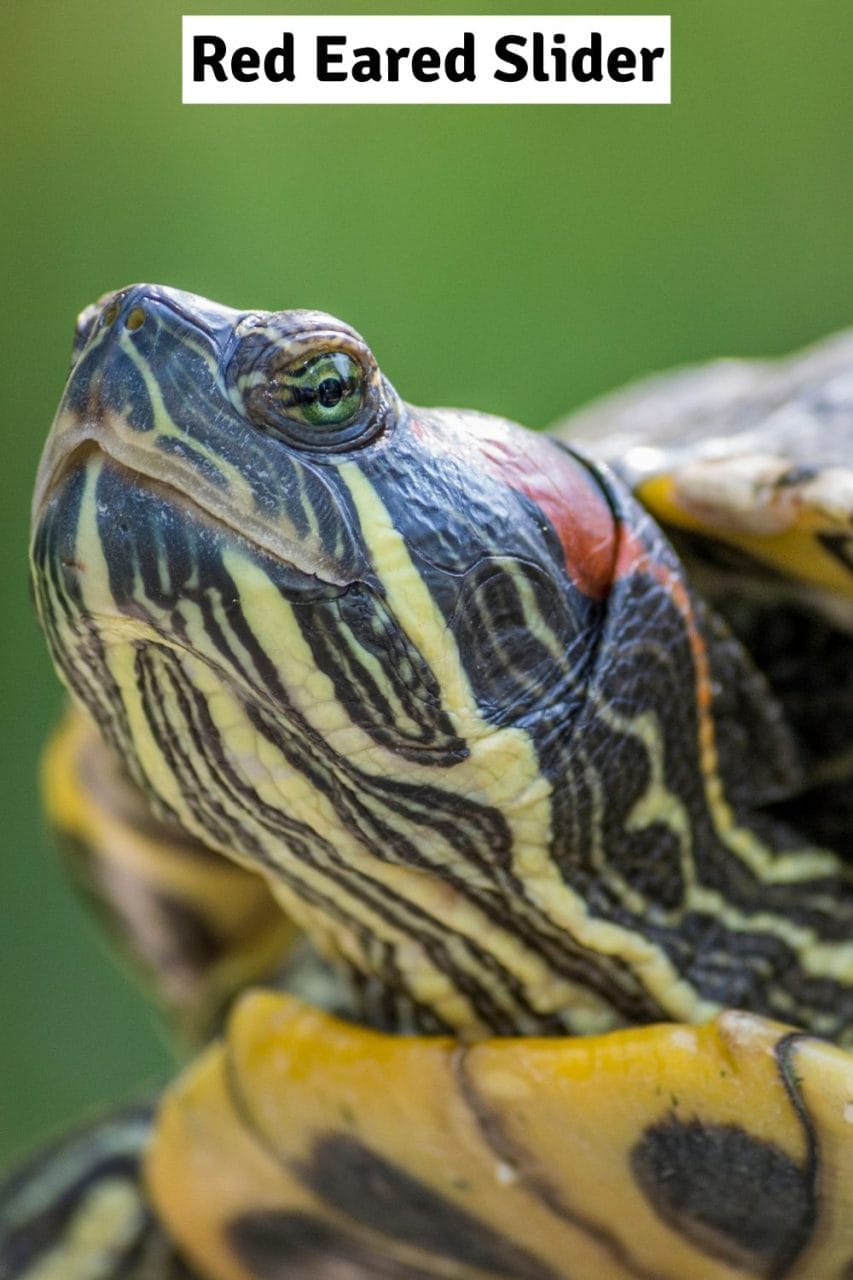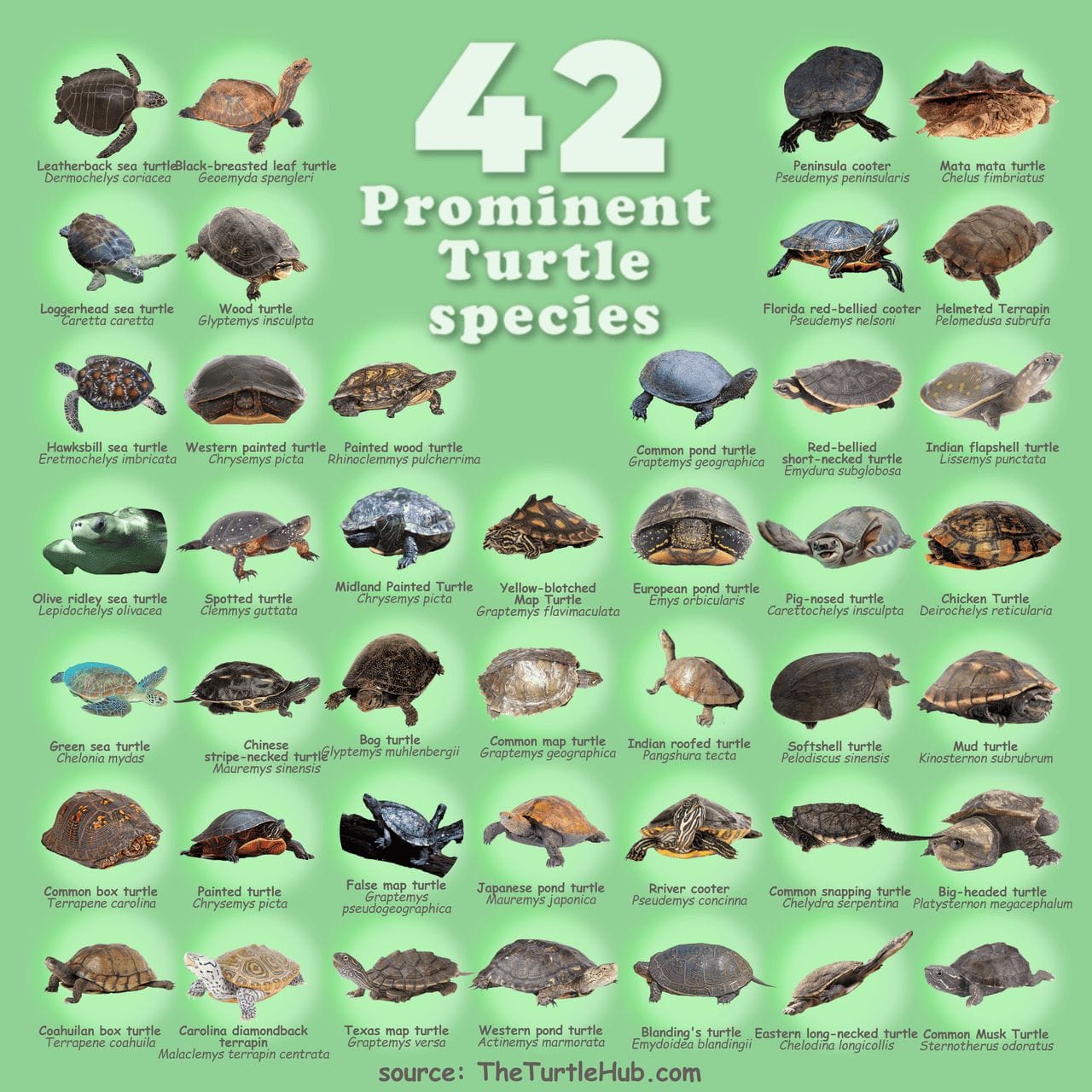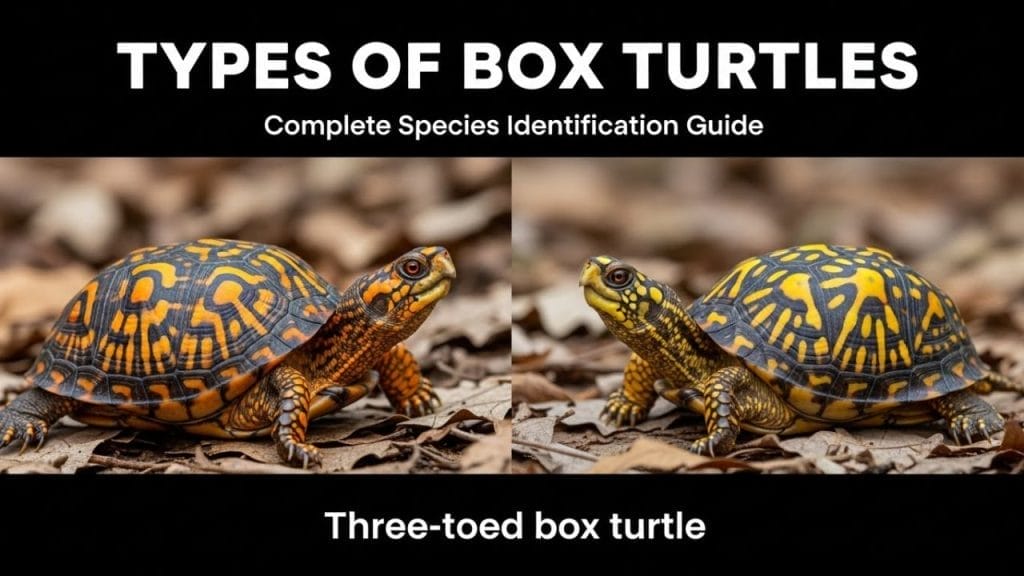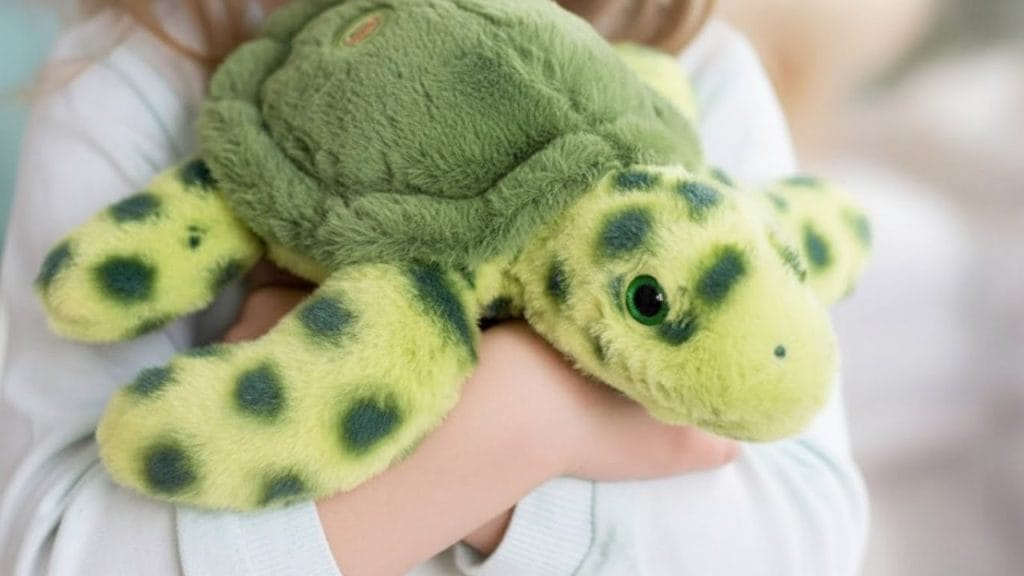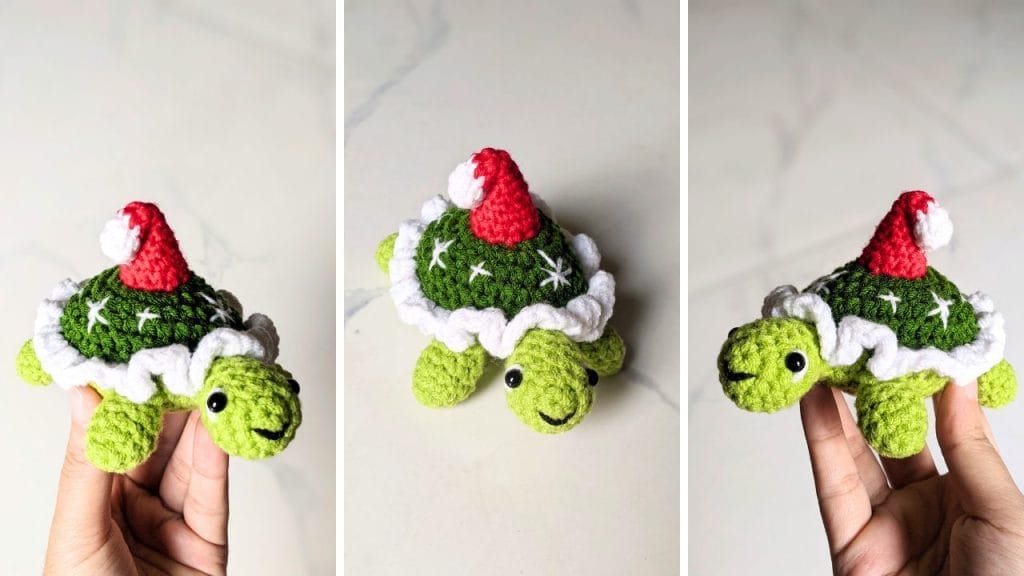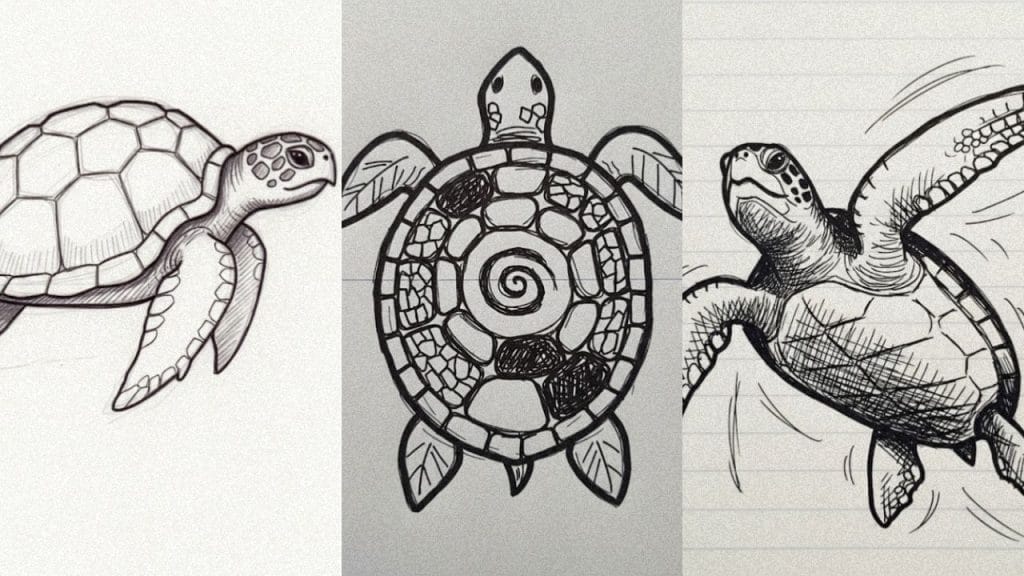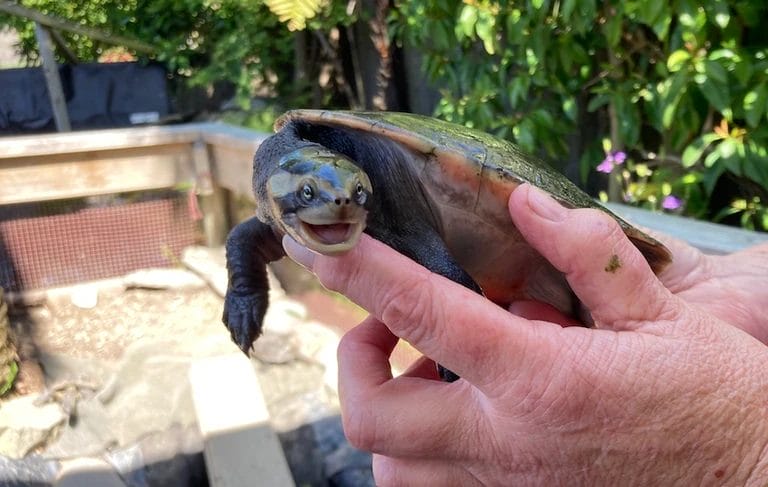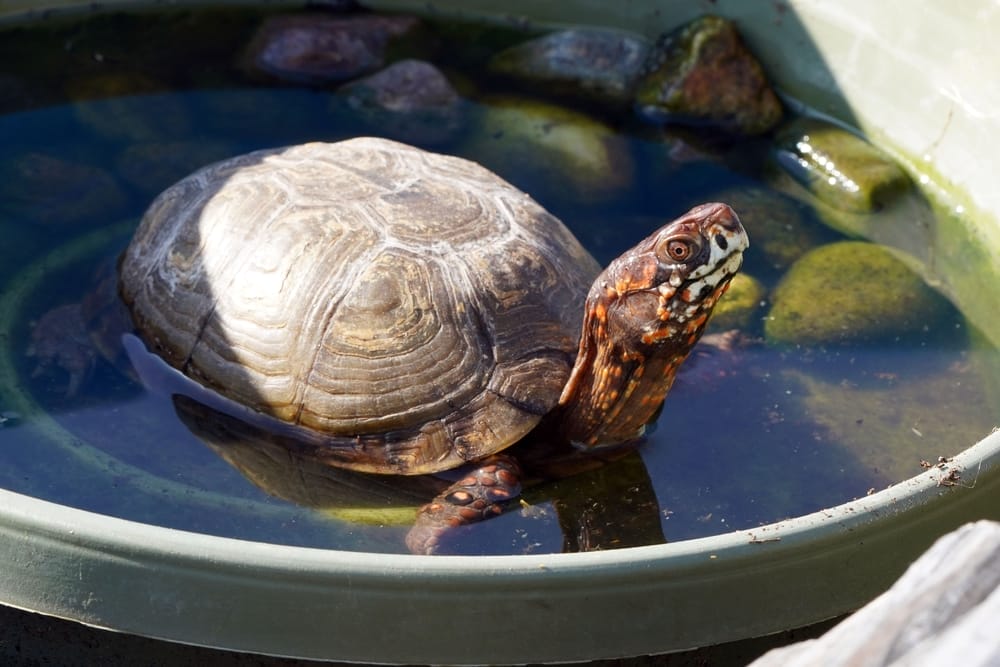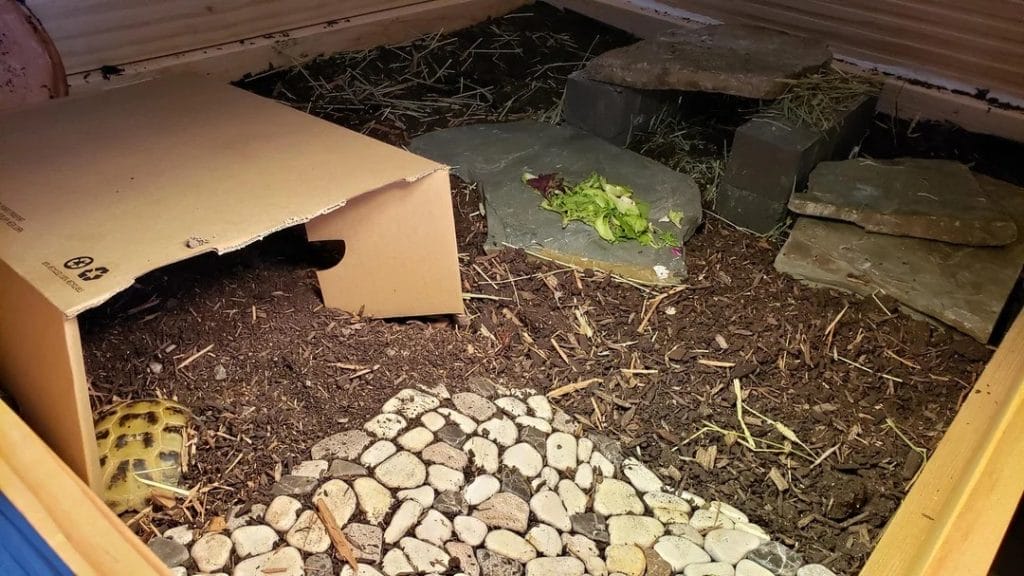8 small pet turtles that can fit inside your pocket!
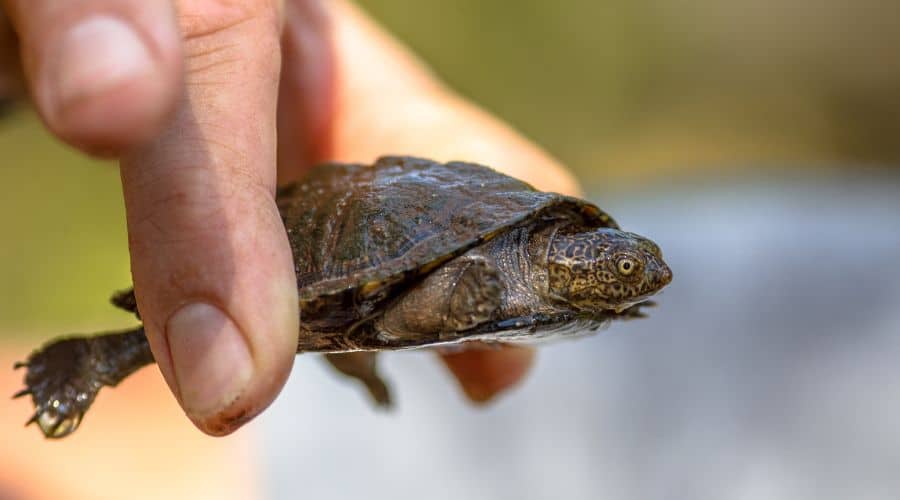
This post was created with help from AI tools and carefully reviewed by a human (Muntaseer Rahman). For more on how we use AI on this site, check out our Editorial Policy.
Common Mud, Striped Mud, Musk, Spotted, Male Diamondback Terrapin, and Male Reeve’s turtles stay small, ranging from 3 to 6 inches
When I was younger, I yearned for a pet that wasn’t just unique but also manageable within the cozy confines of my childhood bedroom. That’s when I stumbled upon the charm of pet turtles, specifically those pint-sized varieties that could fit in the palm of my hand.
This article is a gateway to that world, exploring the best small pet turtles that stay small. This is perfect for beginners or those short on space but big on love for these shelled companions.
| Turtle Species That Stay Small | Size in Inches |
|---|---|
| Common Mud turtles | Up to 4.5 |
| Striped Mud turtles | Up to 4.5 |
| Yellow Mud turtles | About 6 |
| Sonoran Mud turtles | About 6 |
| Musk turtles | About 3 to 4 |
| Spotted turtles | 3.5 to 5 |
| Male Diamond Back Terrapin | About 5 |
| Reeve’s Turtle (Male) | About 6 |
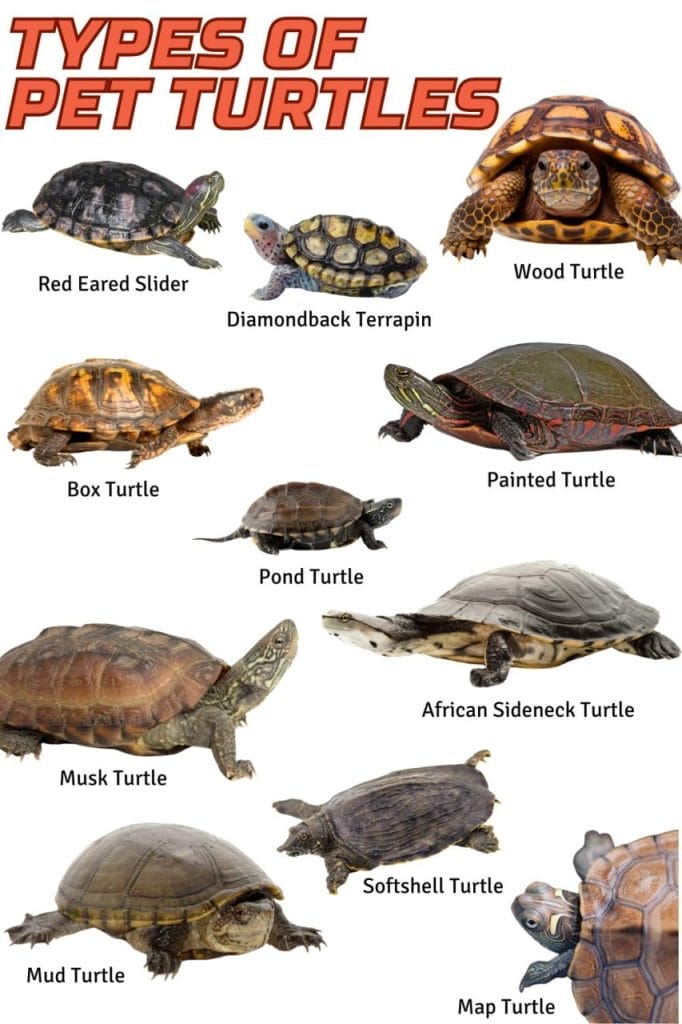
An Overview of Small Pet Turtles
In the market, small pet turtles are also known as dollar turtles, miniature turtles, dwarf turtles, quarter turtles etc. Don’t be confused. They all mean the same thing that is a small turtle.
In this article, at first, we are going to discuss some of the species of small pet turtles that stay small. Then we are also going to know about some species that don’t stay small and get larger eventually.
I hope this article guides you in choosing the best pet turtle for you.
Warning: You Might Spend Hours Here
I’ve built the ultimate turtle and tortoise species database. This isn’t your average turtle list. Filter by genus, conservation status, and more. How many species? Which are endangered? What’s the tiniest one? It’s all there.
8 Species of Small Pet Turtles That Stay Small
When it comes to choosing a pet turtle that stays small, Bradfield Johnson, a reptile hobbyist and rehabber, recommends considering the razorback musk turtle.
“Razor back musk turtles are incredibly small…even full grown adults are 2 1/2-4” from my experience. They have less ‘strict’ UV requirements as well since they are a species that spends most of their time buried in mud under the water! They are super cool too and become pretty friendly with their humans.”
Mr. Johnson notes that while a 40 gallon breeder tank is the minimum space needed for even small turtle species, razorback musk turtles can thrive in a slightly smaller enclosure due to their miniature size.
As this expert advises, they make a great choice for beginners seeking a small pet turtle.
Small Pet Turtles Comparison Chart
| Feature | Common Mud & Striped Mud | Musk Turtle | Spotted Turtle | Male Diamondback Terrapin | Male Reeve’s Turtle |
|---|---|---|---|---|---|
| Adult Size | Up to 4.5 inches | 3 to 4 inches | 3.5 to 5 inches | About 5 inches | About 6 inches |
| Diet | Omnivorous; requires a mix of commercial food and greens like dandelion, parsley, lettuce, and calcium supplement once a week | Omnivorous; commercial food supplemented with shrimps, insects, worms, and crickets | Omnivorous; commercial food with proteins and green vegetables, calcium supplement once a week | Commercial food and live foods like chopped fish, snails, insects, worms; should not overfeed | Pelleted food, green vegetables, worms, insects, snails, chopped fish |
| Care Level | Low to Moderate | Low; good for beginners | Low to Moderate | High; prone to shell diseases, not suitable for beginners | Moderate; requires shallow water habitat and good filtration |
| Lifespan | – | Up to 50 years | – | – | 20 to 25 years with proper care |
| Habitat Requirements | Indoor habitats ideal | 20-gallon tank with clear water, basking spot, heating, and UVB light | – | 70-gallon tank, powerful filtration, heat and UVB lamp, basking spot | 15-gallon tank with shallow water, basking area, heat and UVB light, good filtration |
Small pet turtles legality & conservation status
| Turtle Species | Conservation Status | States Where Forbidden as Pets |
|---|---|---|
| Common Mud Turtle | Endangered in NY | New York (Endangered) |
| Striped Mud Turtle | G5T2Q/S2 (Globally Secure, Subspecies Imperiled) | Not specified |
| Musk Turtle (Eastern Musk) | No federal status, Threatened in Iowa | Iowa (Threatened) |
| Spotted Turtle | Endangered (IUCN) | Not specified |
| Diamondback Terrapin | Vulnerable (IUCN), Varies by state | Endangered in RI, Threatened in MA, Species of concern in GA, DE, AL, LA, NC, VA |
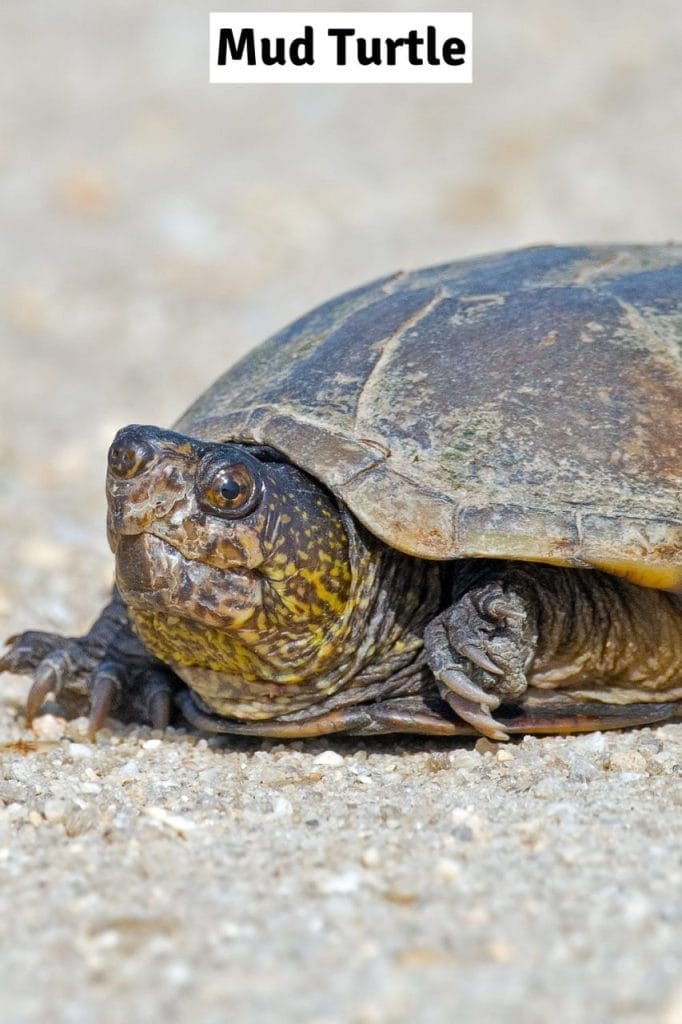
1. Mud Turtles:
Mud turtles are great for having as pets as they only grow about 4 to 5 inches long when adult.
They can live for up to 45 to 50 years in captivity with proper care. Mud turtles are mainly found in Africa and in some parts of Northern America.
Sizes:
- Common Mud turtles, as well as striped mud turtles, can grow up to 4.5 inches long.
- Yellow and Sonoran mud turtles can get about 6 inches long.
Appearance:
Mud turtles have a dark brown to an olive shell. There is no keel on the shell. It is almost dark black with smooth texture. Unlike most other turtles, there are only 11 plates on the shell. The lower shell is yellowish in color.
Ideal Habitat:
Mud turtles require relatively smaller tanks than other species of pet turtles. However, the habitat must have enough space for swimming. The enclosure should also have a basking place where the turtle can get on and dry itself completely off.
Mud turtles are named because they like to dig in mud when hibernating. However, this doesn’t mean that you need to have a muddy enclosure for keeping mud turtles. I recommend to keep mud turtles in an indoor closure so, you can control the temperature so the turtle doesn’t need to go into hibernate.
You need to have two types of lighting on the tank. One is a heating lamp for providing heat on the basking place. The other is a UVB light which helps your turtle in many aspects.
Diet:
Mud turtles are generally omnivorous. Their diet mainly consists of snails, fishes, worms, insects and other types of proteins. In captivity, a good turtle commercial food will provide them almost all of the necessary nutrients. However, you also need to supplement the diet with green leafy vegetables such as dandelion, parsley, and lettuce.
Dust a calcium supplement powder on the food at least once a week.
If you are looking for a reliable seller of mud turtles, you can check them out. I think they are the most reliable shop when it comes to delivering live turtles. You can even choose the age and sex of the turtle!
According to the American Pet Products Association, over 1.5 million pet turtles are kept as pets in the United States. This represents a 10% increase over the past decade.
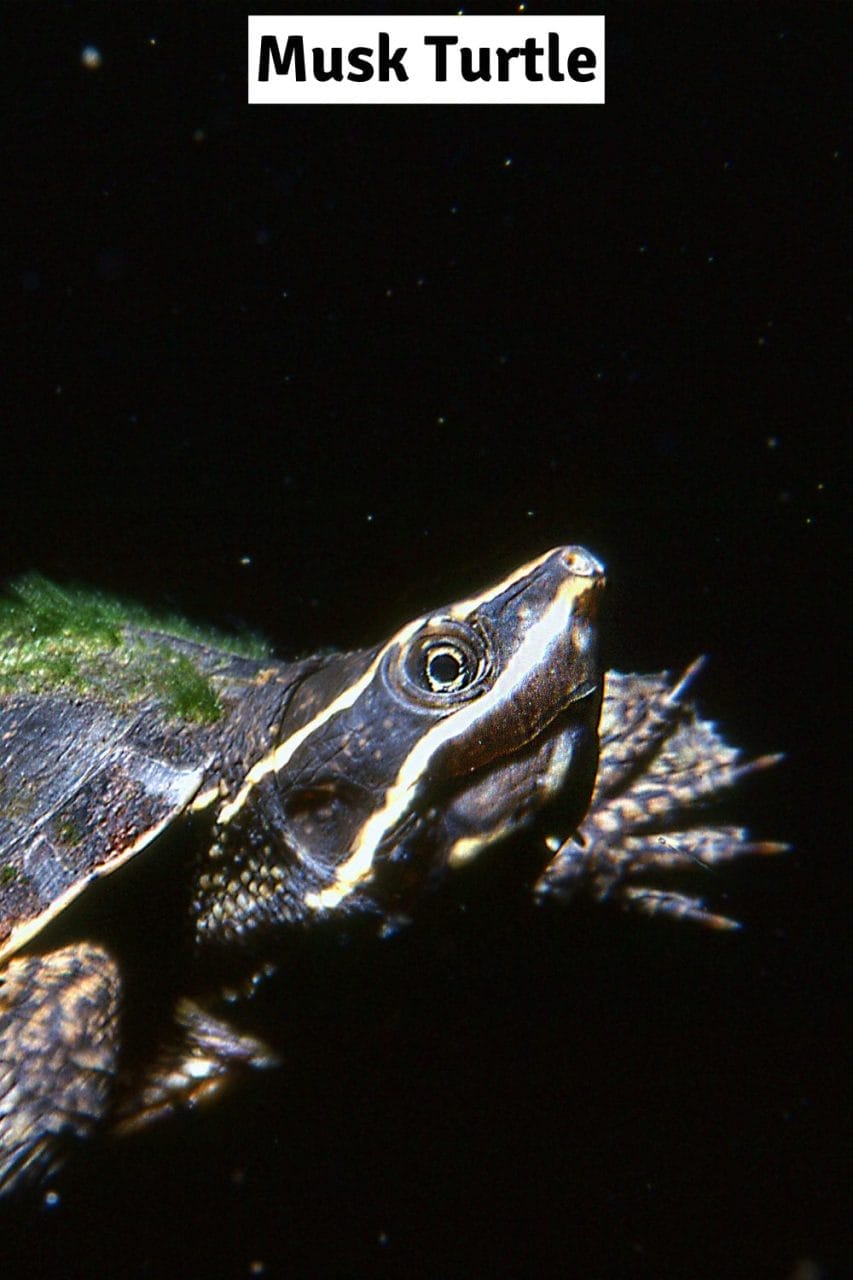
2. Musk Turtles:
It is really difficult to tell apart musk turtles from mud turtles as they have an almost similar physical appearance. Musk turtles can live for up to 50 years long in captivity.
Must turtles can get about 3 to 4 inches long and stays that size forever.
Musk turtles can make great beginner pets as they don’t require much attention from the owner. There are mainly 4 types of pet musk turtles: common, loggerhead, Razorback and flattened. Here is an interesting fact: one of the smallest species of pet turtles in the world is the stinkpot common musk turtle.
Size:
Musk turtles get about 3 to 4 inches long and stay that size for a lifetime. That’s why they are incredibly easy to keep as they need much smaller than other species of turtles. Males are a bit larger than the females.
Appearance:
Musk turtles have a brown to a black color shell. They have a high domed shell. The most striking physical feature of a musk turtle is their heads have two parallel yellow lines.
Ideal Habitat:
One adult common musk turtle can happily live in a 20-gallon aquarium. However, the water needs to be crystal clear. I recommend using a good canister filter for the filtration system. Keep a basking place in the enclosure. It will let the turtle to completely dry off.
You should have at least two types of lights in the setup. One is for heating and the other a UVB light. Both are extremely important for musk turtle’s healthy growth.
Diet:
In wild, musk turtles enjoy a variety of insects, worms, crayfish as well as other aquatic nymphs. In captivity, a good commercial food will provide most of the essential nutrients to your musk turtle. However, do mix up the diet with chopped shrimps, insects, worms and crickets.

3. Spotted Turtles:
Spotted turtles are not fully aquatic. They are somewhat like a semi-aquatic species. They are named spot turtles because they have yellow spots on the shells, head, legs, and necks. The rest of the body is black. That’s why it is very easy to identify a spotted turtle.
Sizes:
Spotted turtles can get up to 3.5 to 5 inches in length. They stay that size for their whole life.
Appearance:
Spotted turtles have a black body. There are bright yellow spots on all over the body, especially on head, shell, neck, and legs. The males tend to have fewer spots than the females. The underbelly has a color range from yellow to reddish. The shell is smooth.
Ideal Habitat:
About a 55-gallon tank is enough to keep a spotted turtle. As they are semi-aquatic, they need to have both land and water in their habitat. You’ll also need to provide them with a good basking spot. Use a high power filter for filtration. Spotted turtles require very clean water.
Like other turtles, use both a heat lamp and a UVB lamp in the habitat. The heat lamp helps to keep the turtle dry and the UVB lamp helps in shell growth.
Diet:
As Spotted turtles are mainly omnivorous, they eat both plant materials as well as animal foods. Their favorite foods in wild are various types of algae, some aquatic vegetation, insects, worms, slugs, tadpoles etc.
In captivity, you can make up their diet with a good turtle commercial food. However, also supplement the diet with other types of proteins such as insects, worms, chopped fishes, snails etc. Green leafy vegetables should be a part of the diet too.
I recommend using a calcium supplement powder on their food at least once a week.
Spotted turtles are awesome and you can truly experience them when you keep them. If you are interested, don’t forget to check this store. Till now I have found them to be the most trustworthy turtle seller in the States.
A 2022 study published in the Journal of Exotic Pet Medicine found that the most common health issues in small pet turtle species are shell rot (25% of cases), metabolic bone disease (20%), and respiratory infections (15%).
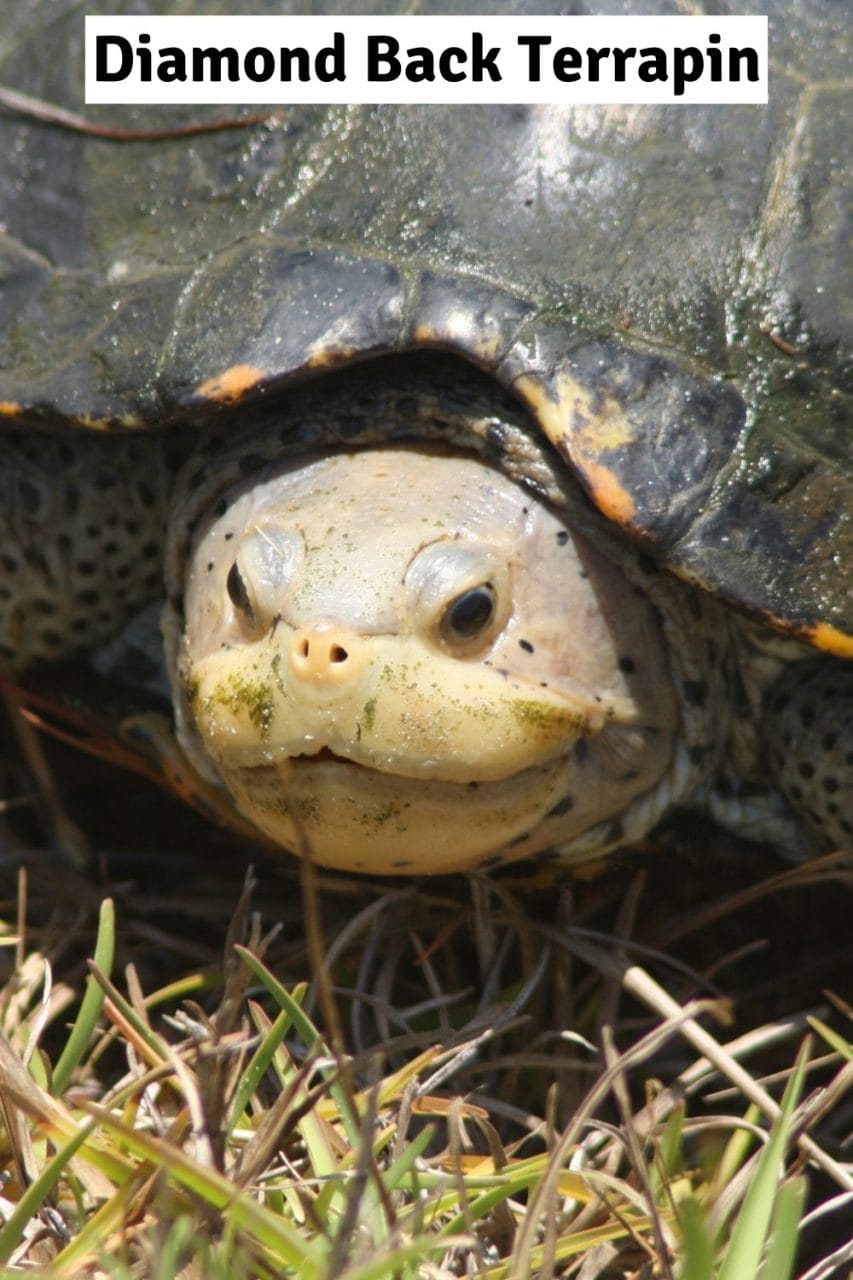
4. Diamond Back Terrapin:
Terrapin turtles are one of the oldest species of animals in the Earth. Though diamondback terrapin turtles are great as pets, they are not suitable for beginners. You need to provide some extra attention to them as they are prone to shell diseases and some other fungal problems.
Size:
Male diamondback terrapin turtles can get about 5 inches in length when they are adult. The females get a bit bigger about 7.5 inches in length.
Appearance:
Diamondback terrapins have a very striking physical appearance. Their shell has a grayish to black color with streaks or spots on the whole body, especially on the head, legs, and necks. They have a white upper lip which is very rare.
Ideal Habitat:
Diamondback terrapins need about 70-gallon tank for living happily in captivity. The habitat should contain a powerful filtration system, proper light system, and a basking spot. The light system must consist of a heat lamp and a UVB lamp. The UVB lamp helps in the synthesis of vitamin D3 in the shell.
Hang On Back (HOB) filters can work well to keep the water clear. However, I recommend using a canister filter which ensures the water is perfectly clean and safe. Crushed corals can be a great substrate for Diamondback terrapin turtles.
Diet:
You can make up their diet with a commercial food and some live foods. Chopped up fishes, snails, insects, worms etc. can be a great choice as live foods. Diamondback terrapins are not good hunters. So, live feeder fish may not be a good idea for them.
Do not feed them more than once a day. Just provide the amount they can eat in 15 minutes.
Looking for a reliable seller to get Diamondback terrapins? You can check them out. They even give you the freedom to choose age & sex of the terrapin.
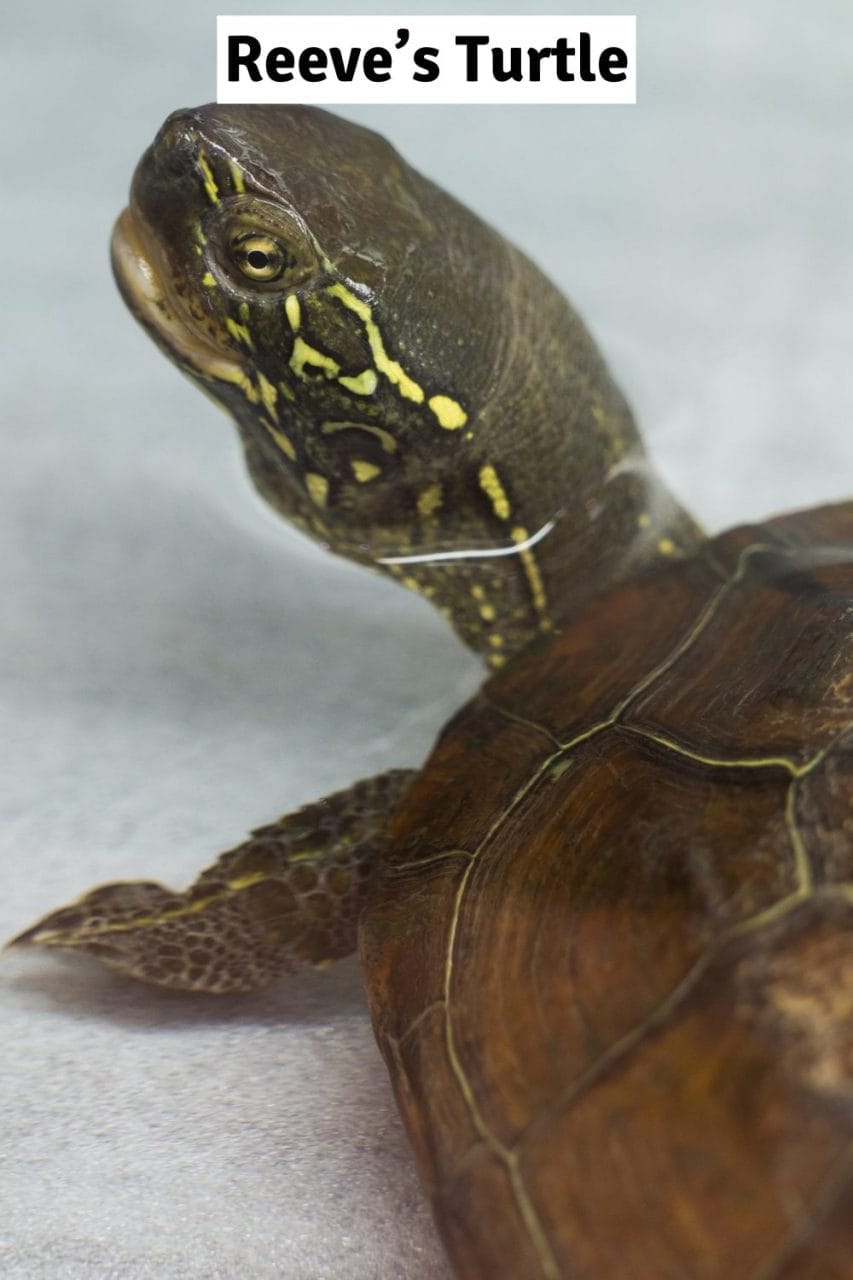
5. Reeve’s Turtle (Male):
Reeves turtle mainly originated from Japan and China. They can get about 6 inches in length. With proper care, Reeves turtle can live for up to 20 to 25 years long in captivity. Reeves turtles are also widely known as Chinese Pond Turtle.
Size:
Reeves turtle can get about 6 inches in length. The males tend to be smaller than the females.
Appearance:
Reeves turtle has a black to tan shell color. The shell has three keels from the back to front. The heads and necks consist of some yellow broken lines.
Ideal Habitat:
A single baby reeves turtle will live finely in a 15-gallon water tank. Reeves turtles need a habitat with shallow water depth. They are not very great swimmers.
So, only provide a water level that is 3 times the length of the shell of the turtle. Also, provide a basking area in the habitat. There should be two types of lights: a heat light and a UVB light. The last vital thing is a good filtration system. I always recommend using a powerful canister filter in a turtle setup. Also, provide some hiding places inside the tank.
Diet:
You can provide pelleted turtle foods to Reeves turtle along with some green leafy vegetables. Also add some worms, insects, snails, chopped fishes etc. to the diet to make it balanced.
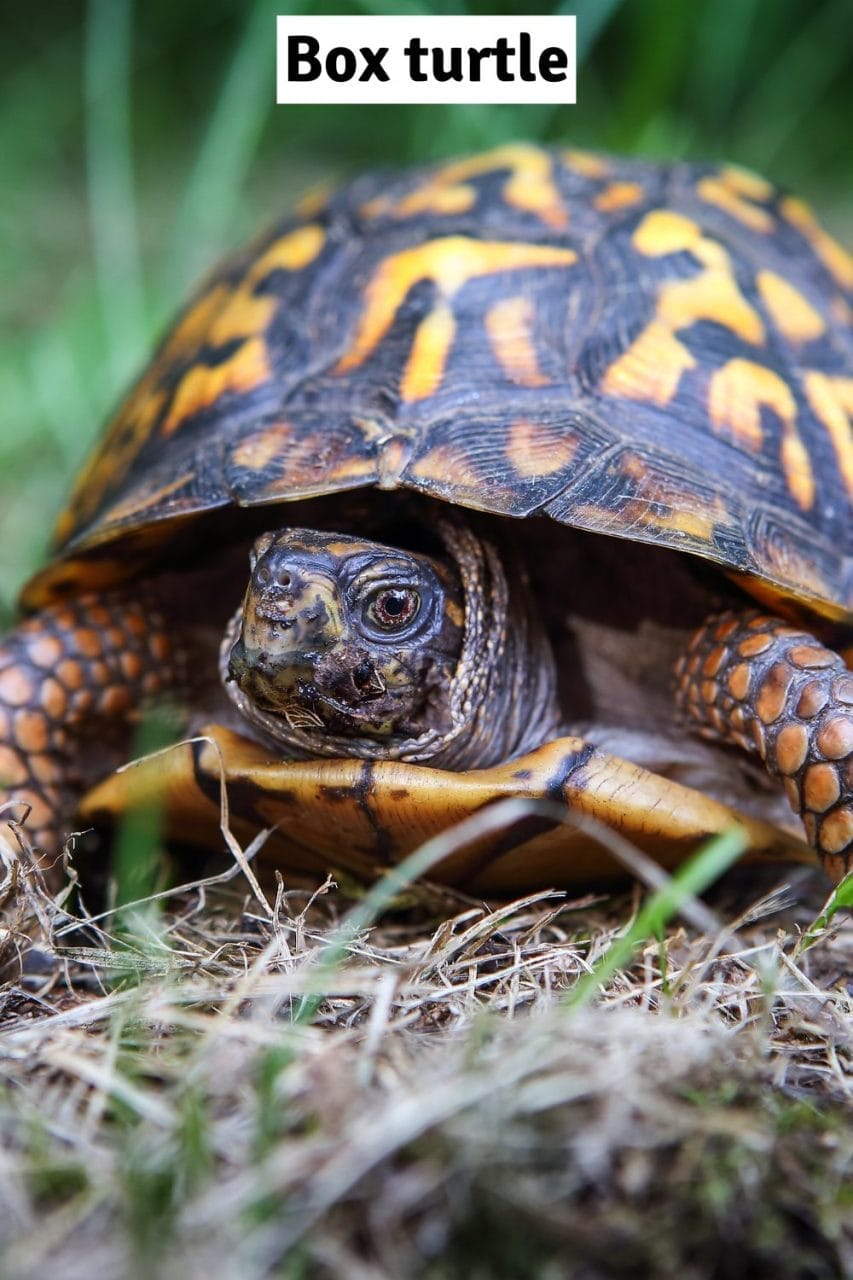
6. Box turtles:
Box turtles are very common as a pet. They generally stay smaller than 6 inches in length. Unlike most other pet turtles, box turtles can completely hide inside their shell. When they hide completely, they look like a box. That’s why they are called box turtles.
Size:
Box turtles generally do no grow more than 6 inches in length. There are two popular subspecies of box turtles: ornate box turtle and the eastern box turtle. Both of them stays small.
Appearance:
An interesting fact about box turtles is they do not have completely webbed feet. So, they are not a good swimmer at all. Box turtles have a high dome shape shell.
Ideal Habitat:
Box turtles do not need an aquatic environment to grow. They are mostly land-dwelling turtles. However, you do need to provide them with a wading pool.
You can either set up an indoor or outdoor habitat for box turtles. Make a good substrate with leaf, potting soil, sphagnum moss, and sand. Spray water inside the habitat regularly to keep the substrate moist and humid. A dry environment is a big NO NO for box turtles.
Also, place some hiding spots inside the habitat so that the turtle can relax and hide if it gets nervous.
Diet:
Box turtles eat a variety of things as they are mainly omnivorous. A balanced diet for box turtle will consist of insects, worms, snails, green leafy vegetables and fruits as treats. Always keep the food in a separate bowl which helps to keep the habitat clean.
Also, remember that box turtles defecate in the water. So, you’ll have to constantly change the water to keep it fresh and clean.
TortoiseTown is the best place for buying box turtles right now. Not only they have a large selection of box turtles, you’ll also get to choose the sex & age of the box turtle. This can be a pretty sweet deal! Click here to check out their enriched box turtle collection!
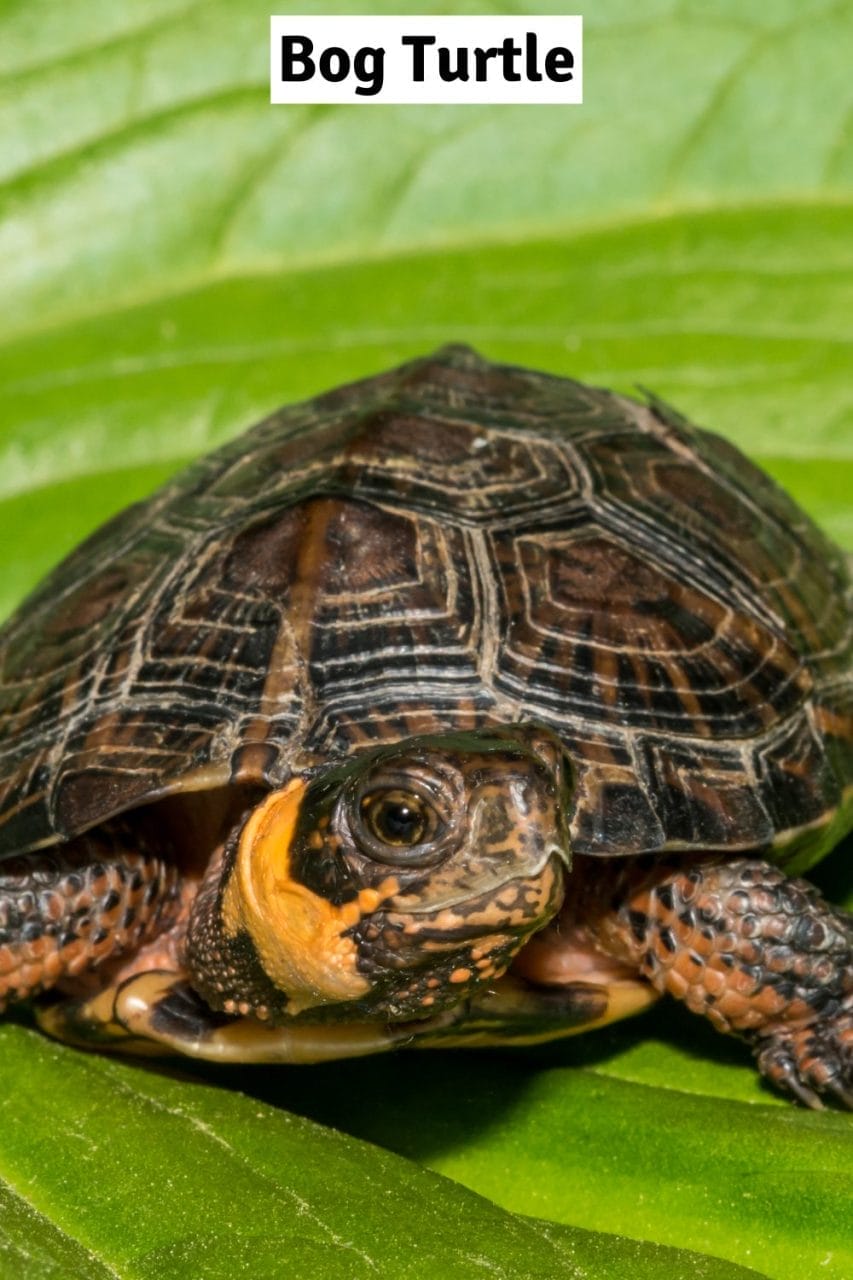
7. Bog Turtles:
Bog Turtles, also known as the Muhlenberg’s Turtle, are one of the smallest turtles. As they are endangered species, it is not easy to get them as pets. Bog turtles are found only in the United States. So, make sure to buy them from legal breeders and reputable adoption canters.
Bog turtles live in bogs, swamps, and meadows. Hence, they have acquired such a name.
Size:
Bog turtles can live up to 40 years.
Like most other turtles, bog turtles are only 1 inch long when they hatch. As they reach adulthood, they grow only to be 3 to 4.5 inches long. The males are usually a few centimetres larger than the females.
Appearance:
Bog turtles make amazing pets for their small size and cuteness. The red, yellow, or orange marks on both sides of the head are the trademarks of bog turtles. Their shell is a bit elongated. The colour of the shell is dark brown. There are often light brown or orange markings on the shells.
Ideal Habitat
Bog turtles are semi-aquatic turtles. It means you have to provide an equal amount of water and land area for your bog turtle. They can live in a small enclosure. The eater should not be too deep.
Also, keep hiding spots for the turtles, as they often like to have some privacy. You can put some plants, tree logs, and rocks to mimic the natural habitats of bog turtles.
Bog turtles hibernate. So, the soil should be soft and deep enough for the turtles to burrow in during the hibernation period in winter. Add some substrates like leaves and mulch for the turtles to hide in. You can also provide them with a hibernation box. But you can opt not to let your bog turtles hibernate at all in winter.
During the summer, bog turtles require plenty of sunlight. So, you should keep the UVB light on for 14 to 16 hours in summer. During the winter, lower the light exposure to 10 hours.
Diet:
Bog turtles are omnivores which means they survive on different kinds of foods. You should prepare a balanced diet plan for your pet box turtle to keep it healthy. The list of food should include insects like ants, dragonflies, spiders, and beetles. Blog turtles prefer snails, slugs, and earthworms as protein sources.
You may also feed birds, chickens, and mice to blog turtles. Do not forget to add some fresh plants, berries, and seeds to the diet plan. You can give some commercial food supplements to your pet bog turtles as well.
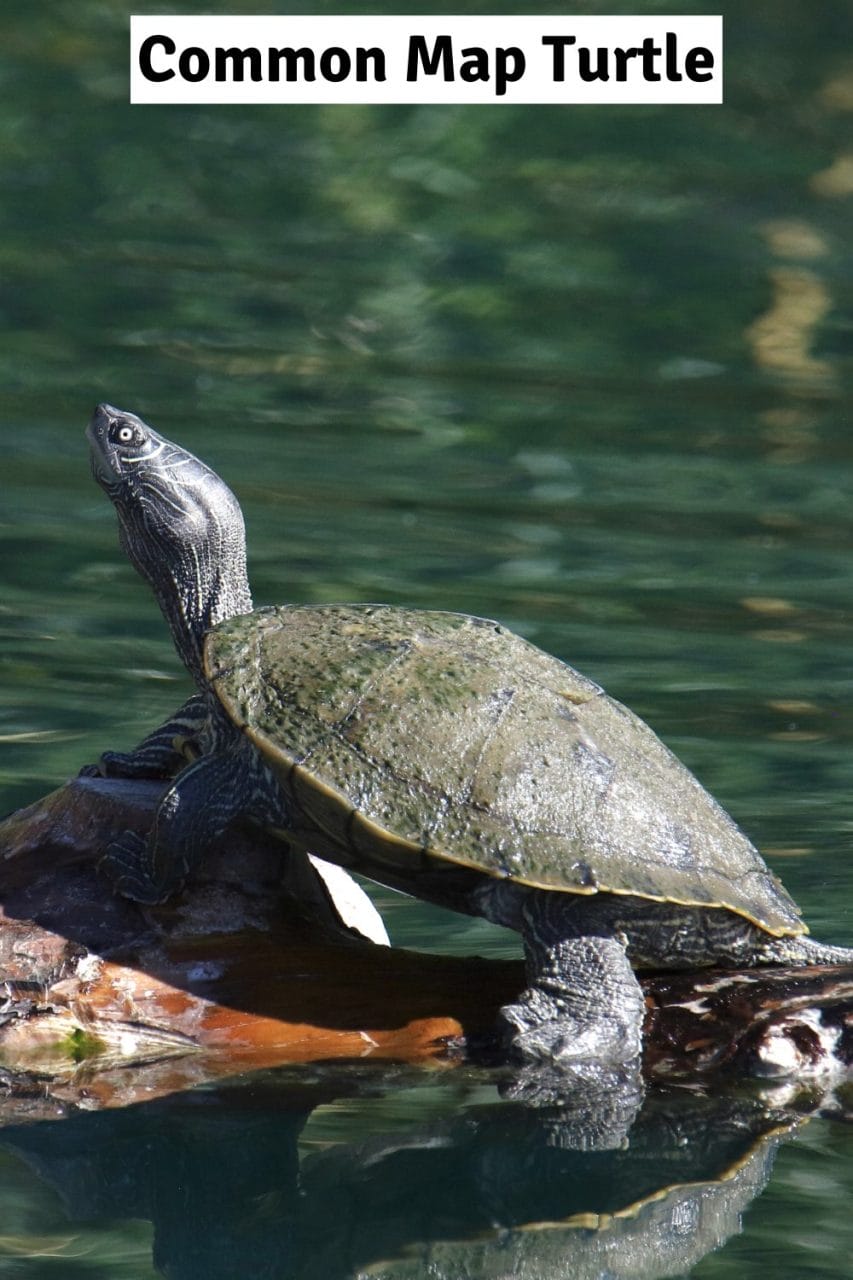
8. Common Map Turtle (Male):
Common map turtles are mostly found in the northeast part of the United States. Common turtles are skilled swimmers and live in spacious water sources like ponds, lakes, and rivers. As semi-aquatic turtles, they also need suitable basking areas to enjoy the sun.
Size:
Many people may get confused seeing map turtles in this list because they can be about 12 inches long as adults. But only the female map turtles can reach that length. The size of male map turtles is about half of female map turtles.
Yes, male map turtles can reach only 3.5 to 6.2 inches as they mature. And they rarely grow larger than 6.5 inches. So, the male map turtles can also be a good choice as small pets.
Appearance:
The carapace of map turtles can be olive to dark brown. You can also see some yellow spots on the shell that look like topographical markings. Hence, the turtles are called map turtles. Another distinct feature of map turtles is the faint keel on the middle of the carapace. The turtles also have yellow markings all over its body.
Ideal Habitat:
Map turtles prefer deep water for swimming. So, the tank should be larger than the tanks for other small turtle species. The size of the water area should be more than the land area.
You should have 10 to 15 gallons of water for every inch of the turtle. For example, if your turtle is 5 inches long, you should provide 50 to 80 gallons of water in the turtle enclosure.
Map turtles can also be kept outside. But make sure the artificial pond is deep enough for the turtles to swim freely.
You must provide a basking area for the map turtles as they need the UVB to maintain good health. There should be a spacious basking platform for the turtle to get dry after swimming.
The basking area should be about 100 to 110 degrees F. Keep the water temperature between 72 to 76 degrees F for the adult map turtles and 78 to 80 degrees for the juvenile turtles.
Map turtles need to retreat from prying eyes from time to time. Therefore, their enclosure should have hiding spots. Add some live or artificial plants, logs, or caves for the turtles to take refuse.
Diet:
Like many other turtles, map turtles are omnivores. So, you do not have to worry about their diet. You can feed them both plant and animal-based foods. A balanced diet for the young map turtles is 50% protein and 50% vegetables. The protein is necessary for the baby turtle’s healthy growth. As they get older, provide at least 25% protein and 75% fruits and vegetables.
Some animal and insect foods for map turtles are earthworms, crickets, roaches, dried shrimp or krill, snails, silkworms, mollies, mussels, and small fishes.
The best vegetables for map turtles are collards, dandelion greens, lettuce, kale, squash, green beans, carrots, and sweet potatoes.
If you want to purchase healthy map turtles as pets, you can visit here. This online turtle store also sells special food supplements for turtles.
This Hilarious Turtle Book Might Know Your Pet Better Than You Do
Let’s be real—most turtle care guides feel like reading a textbook written by a sleep-deprived zookeeper.
This one’s not that.
Told from the snarky point of view of a grumpy, judgmental turtle, 21 Turtle Truths You’ll Never Read in a Care Guide is packed with sarcasm, sass, and surprisingly useful insights.
And hey—you don’t have to commit to the whole thing just yet.
Grab 2 free truths from the ebook and get a taste of what your turtle really thinks about your setup, your food choices, and that weird plastic palm tree.
It’s funny, it’s honest, and if you’ve ever owned a turtle who glares at you like you’re the problem—you’ll feel seen.
Why Are Small Pet Turtles Better?
- Small pet turtles are very adorable and cute. They are fine with much less care too! These types of turtles are very easy to maintain. They are not very demanding. You can also handle them easily. Therefore, taking care of them becomes lot easier.
- Small pet turtles require much smaller space than a regular size turtle. Moreover, small pet turtles are suitable for keeping in a glass aquarium. Hence, they are suitable for keeping in small apartments and homes. Besides, the small size tanks are easy to clean and move around.
- Keeping a small turtle require lower maintenance cost. There will be less electricity cost to run the aquarium. Smaller turtles also require less food than larger turtles. So, there will be lower food cost as well.
A 2020 survey by the U.S. Fish and Wildlife Service found that 16% of Americans own a pet reptile like a turtle or lizard. This is up from only 5% a decade ago.
Small Pet Turtles Need Care Too
Though small pet turtles are relatively easy to maintain, they need regular care too! Don’t think that keep them will be a walk in the park. They are just like any other pet animal. You need to look out for them constantly. They want love and attention from you like any other pet animal.
I always recommend maintaining your tank regularly when you are keeping small pet turtles. Turtles are generally a messy animal and they make the water dirty very quickly. Unless you want your turtles to swim in dirty water, you need to clean the tank properly every 15 days. I always use a powerful filter in my turtle tanks. It helps to keep the tank as clear as possible.
You should feed your small pet turtles 4 to 5 times a week. Don’t overfeed your turtles because they can produce a lot of waste. It is one of the main reasons for water contamination.
Male Vs Female Pet Turtles: size differences
There are over 250 species of turtles. However, only a handful of them stay small even in the adult stage. Before getting into the details about small turtle species that can make excellent pets, you should know about the size difference between male and female turtles.
There is a size difference between male and female in almost every turtle species. Generally, females are larger than males.
In fact, some male turtles remain just about 6 inches while the females can grow up to 12 inches! As small turtle species stay small, you don’t need to spend a huge fortune on buying a 100-gallon tank.
4 Pet Turtles That Don’t Stay Small:
Throughout the article, we have talked about popular pet turtle species that are small and stay small. However, there are also some very popular pet turtles that indeed get very large with time. Some pet shops may tell you that these species will stay small, don’t get tricked!
I can relate to an interesting story here. A couple of months ago, one of my friends went to a pet shop to buy a pet turtle. He wanted a turtle that is easy to care for and stays small. The salesman there said Red Eared Slider stays small for their whole life. I couldn’t help but laugh at this.
Though red-eared slider babies stay small for a while, that doesn’t mean they always stay small. With proper care, a red-eared slider turtle can get to about 14 inches long!
Here is a list of some of the popular pet turtles that indeed get very large with time:
1. Red Eared Slider
Red Eared Sliders are one of the most common pet turtles in the USA. They are mostly originated from Mexico and Texas. Red-eared sliders are a fully aquatic turtle. however, they do need a basking place in their habitat. They can live for 50 to 70 years long in captivity.
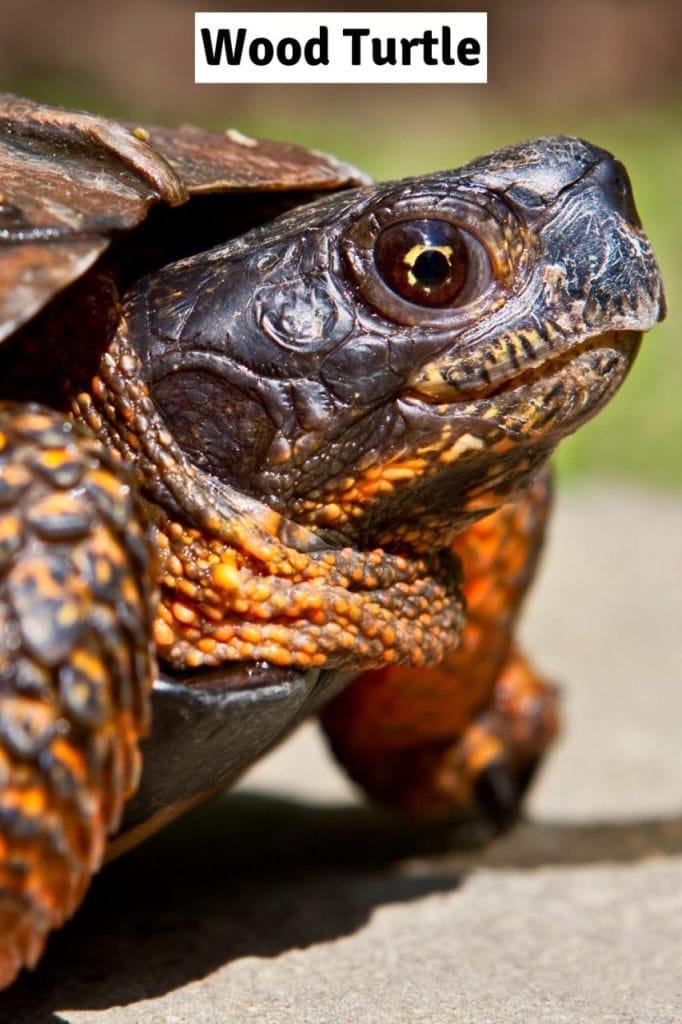
2. Wood Turtle
Wood turtles are mostly originated from Costa Rica as well as Mexico. They have a brown to a tan color shell. The legs are either red or yellow. In captivity, wood turtles can get about 9 inches in diameter.
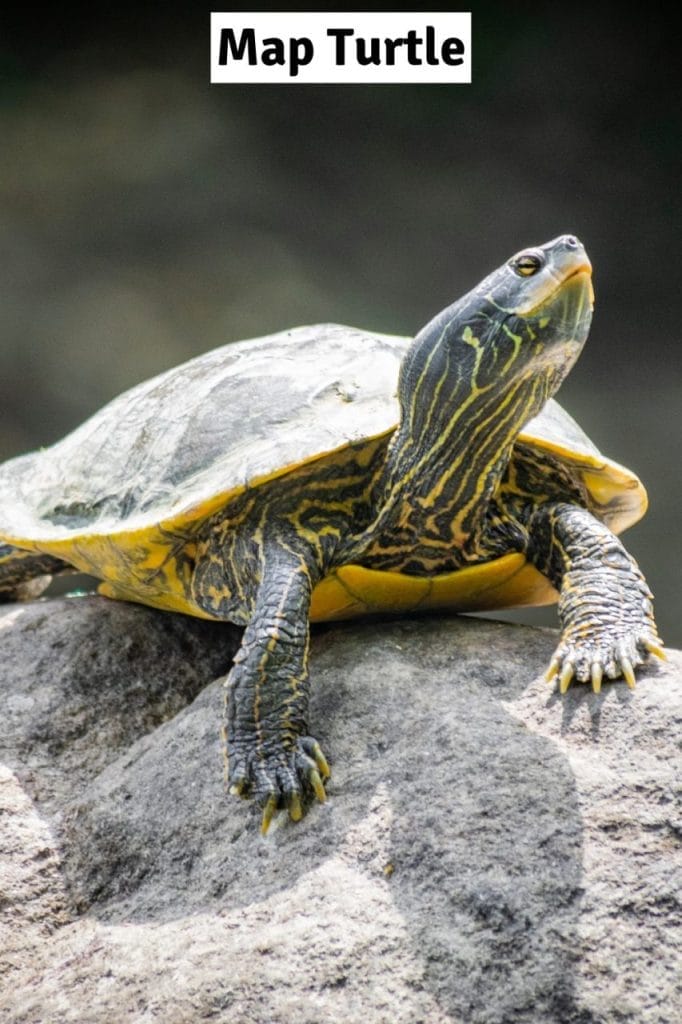
3. Female Map Turtle
Map turtles have map shaped markings on their shells. That’s why they got the name map turtle. Female map turtles can get about 10 inches in length in captivity. Map turtles love to be in moving water. In wild, you can find them in streams, lakes as well as in rivers.

4. Painted Turtle
Painted turtles have a very striking physical appearance. They look as though an artist has painted on them.
They can get about 10 inches in length. If properly taken care of, painted turtles can live for up to 20 to 25 years.
This list is made on the fact that, all of these pet turtles start their life being very small in size. However, they quickly grow very large over time. So don’t get tricked into buying them thinking they will stay small for their whole life.
What Is The Smallest Turtle You Can Buy?
If you ask me about the smallest tortoise, I would unhesitantly name Speckled padloper tortoise. The species get no bigger than 6 – 10 cm and weigh around 95 – 160 grams.
But deciding upon the smallest turtle is difficult. Owners often do not agree on one name. But as far as it goes, the common musk turtle or stinkpot turtle is the most accepted as the smallest pet turtle. Another 2 species that will occupy the top 3 positions are the bog turtle and the African dwarf turtle.
An adult African dwarf turtle reaches a carapace length of 4 – 4.25 inches. Because of the petite size, the pet requires a small space to thrive. The turtle is low maintenance and easy to handle with a proper care sheet.
common health issues in small turtles and preventive care
Small turtles, like other pets, can face various health issues. Some of the most common ailments include:
Metabolic Bone Disease (MBD): This condition causes shell deformities and weakening of bones. Symptoms to watch for are a soft shell, lethargy, and difficulty in movement. Immediate veterinary attention is crucial, and treatment typically includes vitamin D and calcium supplements, as well as supportive care such as physical therapy.
Abscesses: These are swellings that may occur anywhere on a turtle’s skin, often filled with pus and related to vitamin A deficiency. Treating an abscess usually requires a surgical procedure to open and flush the abscess with an antiseptic solution, and may also include antibiotics.
Gastrointestinal Parasites: Roundworms are a common issue. While often asymptomatic, severe infections can lead to weight loss, blood in feces, and diarrhea. Treatment involves deworming medication.
respiratory infections: To prevent respiratory infections in turtles, it is important to maintain proper temperatures and temperature gradients in the enclosure, prevent vitamin A deficiency, ensure good hygiene, manage the correct water depth, control humidity levels, and quarantine new turtles to prevent the spread of infections.
Preventive care:
- Providing suitable living conditions: Keep the turtle’s environment clean, with adequate heating and lighting, and water temperatures maintained within the recommended range for the turtle species.
- Feeding a proper diet: Offer a balanced diet of animal and plant materials, supplementing commercial pellets with vegetables, fruits, and live prey.
- Regular veterinary check-ups: This helps catch any issues early and provides professional advice on diet and living conditions.
Common health problems like respiratory infections, shell rot, vitamin A deficiency, and parasitic infections often stem from poor husbandry. Therefore, maintaining cleanliness, offering a balanced diet, and regular veterinary care are key practices to keep your turtle healthy.
42 Prominent Turtle Species In The World: Infographic
Want to get a printable version of this infographic? Click here! If you want to use this infographic on your website, please link back to this page as source.

About Author
Muntaseer Rahman started keeping pet turtles back in 2013. He also owns the largest Turtle & Tortoise Facebook community in Bangladesh. These days he is mostly active on Facebook.

